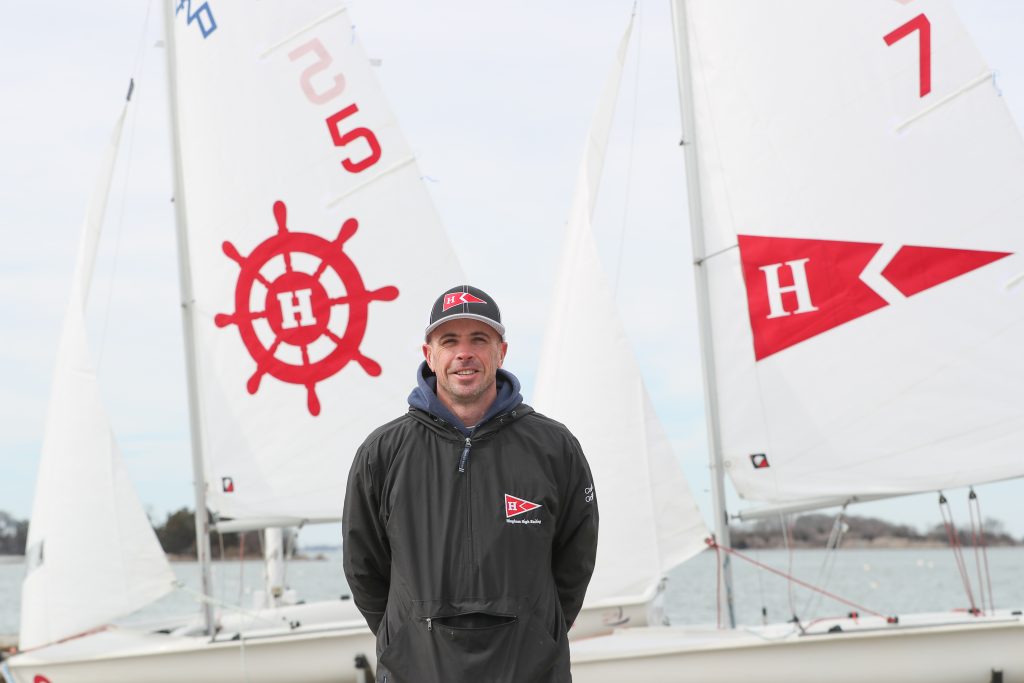
March 27, 2023 By Carol Britton Meyer
The Hingham High School Sailing Team has come a long way under the able leadership of Coach Joe Griffin over the past 12 years.
The team, now back in the Sailing Team A Division, is looking forward to a successful season, traveling all over New England.
“We will be competing in large qualifying regional regattas for the first time in over 12 years because our program is growing stronger and we’ve been able to have newer equipment to help develop our sailors while making it a safe sport,” Griffin — a 1999 HHS graduate — told the Hingham Anchor. “Our goal this year is to qualify for some national regattas from these qualifying regional regattas.”
Griffin has sailed his entire life, learning the skill on his father’s boat and at Hingham Yacht Club.
“I raced dinghies until I was 16, then moved on to big boat racing,” he recalled. After taking a few years off from sailing in his college years, he picked up the sport again and “fell in love with sailing again as an adult.”
Griffin went on to buy several boats, sailing them all around new England. “Finally in 2018/2019, I was fortunate to be able to sail down the East Coast and travel to the Bahamas on my own sailboat,” he said.
Coaching the HHS sailing team beginning in 2011 started out as a fun activity to help out, “and over the years has turned into a love of coaching and seeing all these young people succeed over the years,” he said. “I think the most rewarding part is when I see sailors whom I coached years ago who are still out sailing and racing — it’s such a nice feeling.”
The sailing team belongs to a national league made up of smaller regional leagues. “We compete in the regional league meets for a chance to race on a national level against other high school sailing teams from all over the country, competing mainly in team racing matches with some fleet racing regattas,” Griffin explained. “We do a ton of classroom work to study rules, and video work such as watching team racing from an aerial view or specific videos on moves and tactics.”
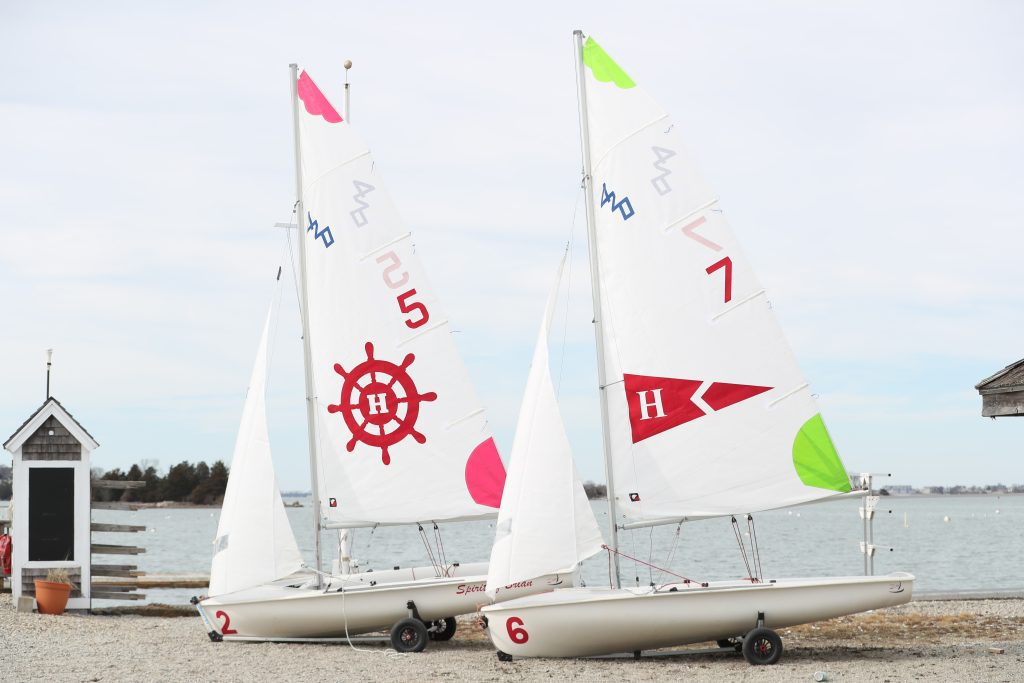
Six new boats added for 2023 season
The sailing team has raised more than $20,000 with the help of private donors, Hingham Sports Partnership, and a fundraising partnership with Hingham Maritime Center — the team’s home base.
This fundraising has paid for six more boats for the JV team and 12 sets of new sails bearing the HHS Sailing Team burgee and the Town of Hingham logo in time for the 2023 season. “They are also color-coded so spectators can watch and keep track from the shore,” he said.
Sailing is truly a coed sport, with girls sailing with guys, guys competing against girls, or a coed boat going against an all-boys boat. Our females will/have competed against all-boys schools, Griffin noted. “No other sport does this. We have had one of the highest percentages of females on the team for the last 12 years — more than 50 percent — when other teams have only a handful.”
While the season is short — running from March 17 through Memorial Day — team members spend a lot of time together on long bus rides and have developed close friendships over the years. “It’s rewarding when kids I coached tell me later on that they are now involved in adult racing,” he said, “and when their parents talk with me about their longstanding friendships when I see them.”
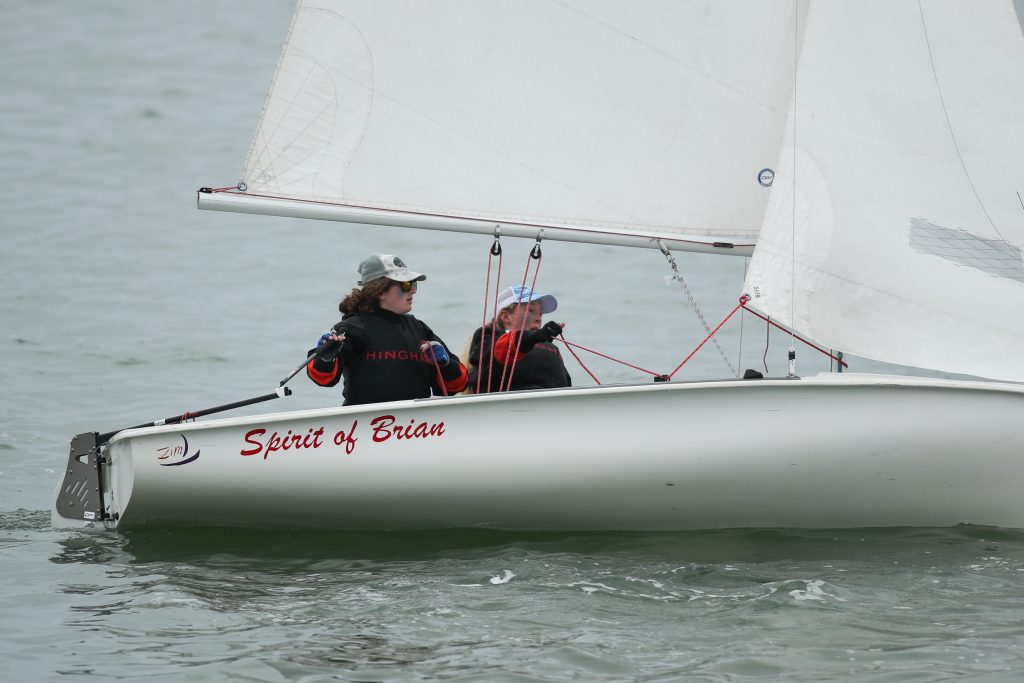
Many team members grew up sailing
Some 20 students are part of the team. “A majority of the kids grew up sailing at Hingham Maritime Center or at Hingham Yacht Club and have sailed a lot in summer programs or other programs on the Cape and other locations,” Griffin explained. Some of the older sailors sail all winter long in New England at different venues.
At the same time, any student with an interest in sailing and a willingness to make the effort is eligible to join the team.
The schedule is created in January for the start of the new season. “We have to get in [a certain number] of meets and races to qualify for our national and regional regattas,” said Griffin, who expressed appreciation for the support of parents, the Boosters, and volunteers who help with the equipment locating, buying, shipping, and prep work for the season, loaning their vehicles to tow the boats, bringing parts back from different parts of the state, and countless other tasks that are needed that I couldn’t get done without their help — which has contributed to the growth of the team.”
It’s up to the coaches to set the schedule and to make sure they schedule the required number of races against other teams in the league. The schedule is driven by the private school calendar for the most part, as many teams the HHS Sailing Team competes against are from private schools.”
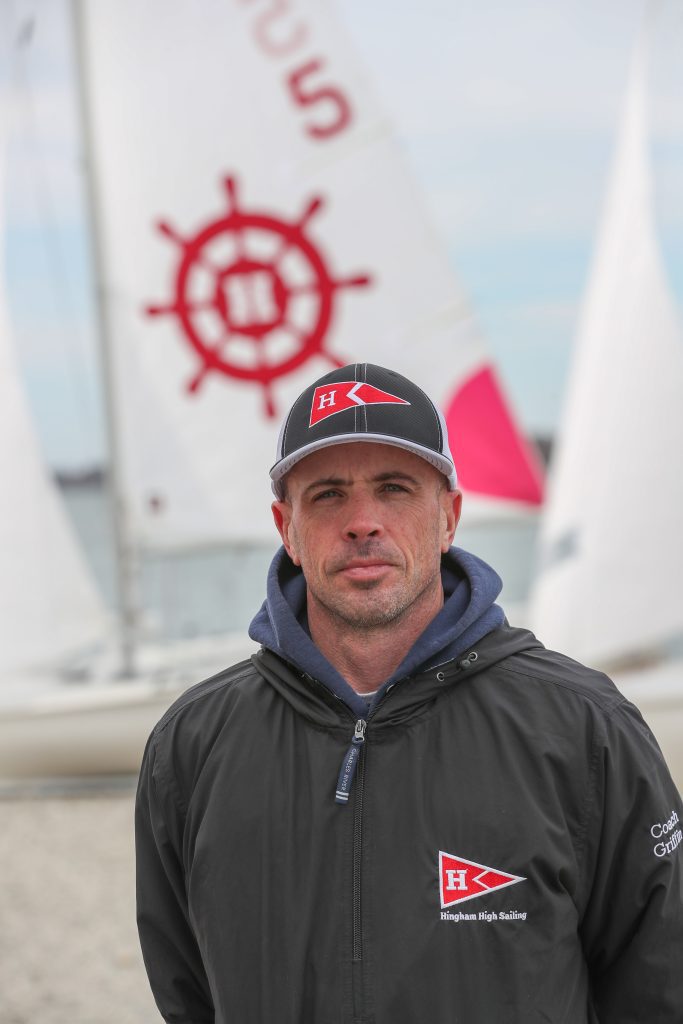
Facing challenges
Griffin started as an assistant coach with the HHS sailing team in 2011 with a team that included only six skilled sailors out of 8 or 10 total, and eight 11-year-old boats with holes in the sails. At that time the team was in the Sailing Team A Division.
In his second year in that role, the situation remained the same — eight water-logged boats that were in disrepair and a limited number of sailors.
The situation started to take a turn for the better slowly but surely in 2013 when Griffin took over as head coach, despite the same boats and “trying to figure out how to get new ones,” he recalled.
While the number of participants was at a low at the beginning of season, there were enough sailors to compete, although the situation was not ideal.
In 2014, morale was low, with the team “losing steam at this point and not able to compete with other schools due to a lack of water access and participation,” Griffin said.
The following year, there was a focus on getting some boats in good condition, but with no resources available, a Boosters group started to raise money, but not enough.
Despite the challenges, the team grew to 10-12, with a majority of skilled sailors. Meanwhile, the condition of the boats continued to deteriorate.
With efforts to raise more money continuing in 2016, the team grew to 12-16 members, most of them sailors.
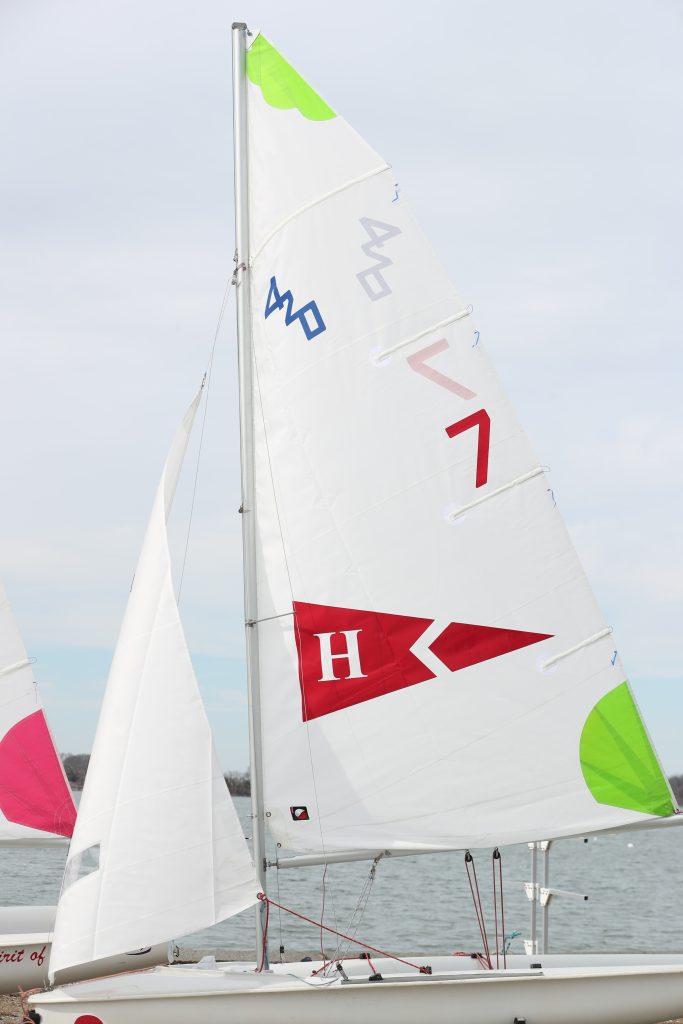
Rebuilding the sailing team
“We switched down to a lower division that year because of our challenges of getting on the water in the spring in time to practice. We would lose about four weeks of practice due to not being able to access any docks in the area,” Griffin recalls. “We were getting blown out by Division 1 teams, partly due to the lack of good equipment and access to the water — which led to less practice and development time — so we moved down to the B Division in order to rebuild, after being in Division A from the inception of the team.”
At this point, the team had two new boats paid for by donations from two parents, two new-to-them sails, and eight boats in great disrepair.
(The water access issue was resolved in 2022, when Hingham Maritime Center partnered with the sailing team and put in floating docks that the sailing team could use, enabling them to start their season on March 17 each year. This year, a gangway will be installed to provide easier access to the floating dock.
“We finally have enough equipment and resources after 12 years to get out on the water on time and to compete with top schools in the region again,” Griffin said.)
By 2017, the team had raised enough money to purchase four used boats from Hingham Yacht Club, “leaving us with six good boats,” Griffin explained, thanks to his efforts in cooperation with HYC club members.
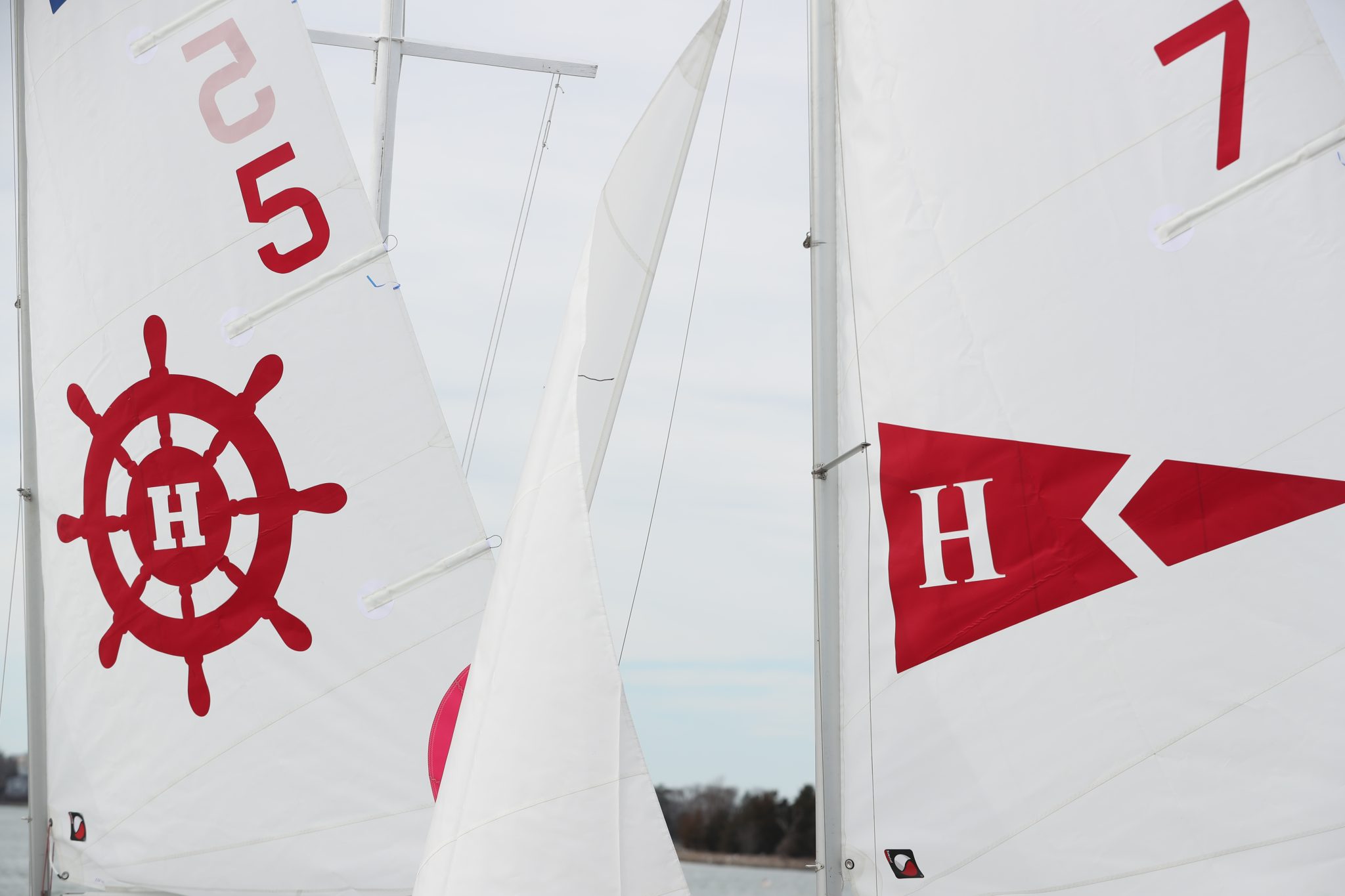
Gain in numbers
“Not only were the Boosters, parents, and coaches working on fundraising, I attribute a lot of the teams’ gain in numbers and notoriety to the team members making more of an effort to be seen around town and school and getting the word out there that THERE IS A SAILING TEAM!” Griffin said.
At this point, there were more team members than boats. “We regularly had at least four kids in the coach boat. I was constantly switching kids in and out, and every one of them wanted to be out sailing and not on the coach boat,” he recalled.
In 2018, the tides turned, with the team coming in second in Division B, with a team of 14-18 — the majority of them skilled sailors. Meanwhile, Boosters meetings continued, along with efforts to raise money for much-needed gear while thinking about the next round of boats. The visual marketing by the team was also going strong.
That year, Griffin began to clear the debris out of the building where the boats were stored and built and installed racks in the newly cleared out space for all the new boats.
During the early COVID years, Zoom meetings were held among team members, but there wasn’t much activity. Coincidentally, Griffin spent the winter sailing in the Bahamas.
When the team was able to get together in person in 2020, the numbers were at an all-time low of six — barely enough to field a team.
“Miraculously in 2021, the number of members jumped back up to more than 14, with knowledge of more sailors coming up the following year, so we decided more boats were needed,” Griffin said. “If we wanted more kids to join, we needed more boats for them to sail.”
That year there was a renewed interest in sailing, and the team gained about 10 freshmen participants. “We had been asked to move up in the Division, but I wanted more time in the B Division for our team to develop its skills,” he explained.
By last year, more than 18 HHS students had signed up for the team. “Only 12 could sail at one time — which meant that not many kids could get into many meets — and there were no resources to have JV meets with the number of boats we had,” Griffin explained. “A lack of equipment prevented the team from developing further, and hard choices needed to be made as to who would compete.”
That said, the team won an all-girls regatta and placed in several other regattas. “We took second place in the B Division South and easily competed against many A teams,” according to Griffin.
Learning team racing skills as well as self-reliance
He emphasized the challenges posed by the environment, “which plays a critical role in sailing — from dealing with changing currents, winds gusting to 30 mph then back down to 15 mph, waves slowing you down to a stop, and wind shifts — or the ocean could be as calm as a swimming pool on other days with no wind.”
These young sailors “are processing so much information all at once, which is pretty astounding,” Griffin said. “They have to process the wind, including speed/direction/changes; water current, i.e., direction/speed/changes; where their teammates are; anticipate the next move at next mark; and think strategically to move their team into winning position — all while trying to sail the boat as fast, and sometimes as slowly, as possible without collisions or being hit by the boom, which sometimes rotates at lightning-fast speeds with our maneuvering.”
Griffin’s hope is that he’s not only coaching these young sailors in team race sailing, but also teaching them to be self-reliant.
“Not only are these kids sailing, but they are physically maintaining their own boats, fixing breakdowns, problem-solving, and driving the trailers that transport the boats, because that’s what needs to happen when you’re on a sailing team,” Griffin said. “It’s great to see all the ladies and guys working together, both off and on the water. I can’t wait to see what they accomplish this season, starting with our first Quad Team Race Meet April 1 at Duxbury Maritime Center.

